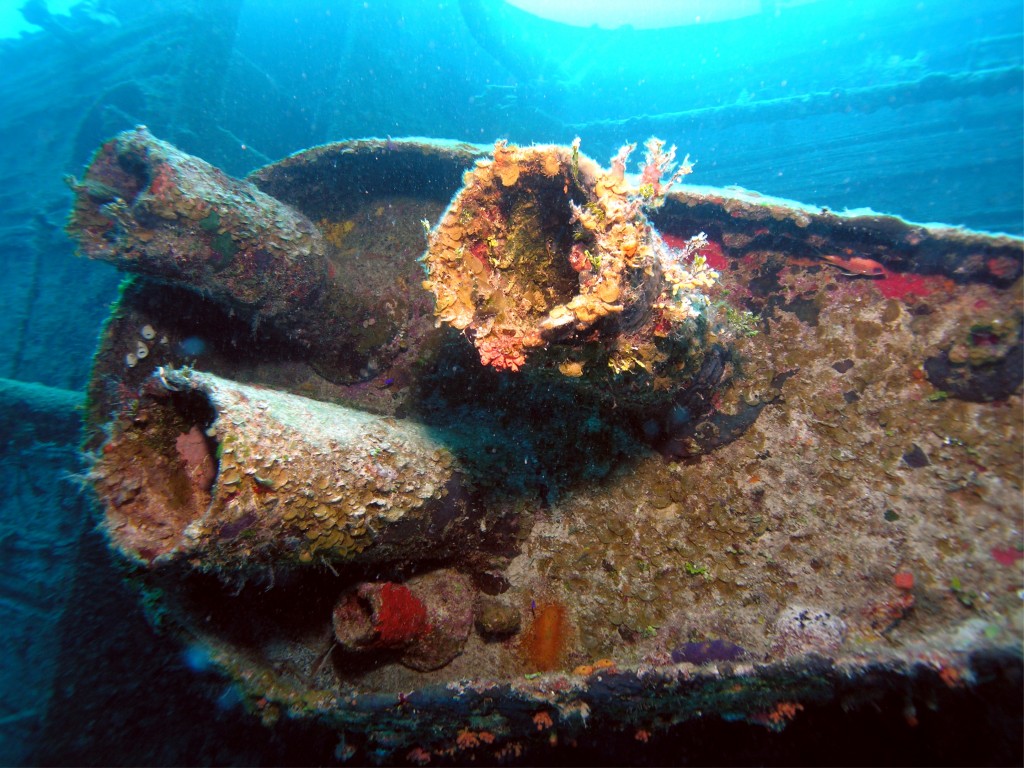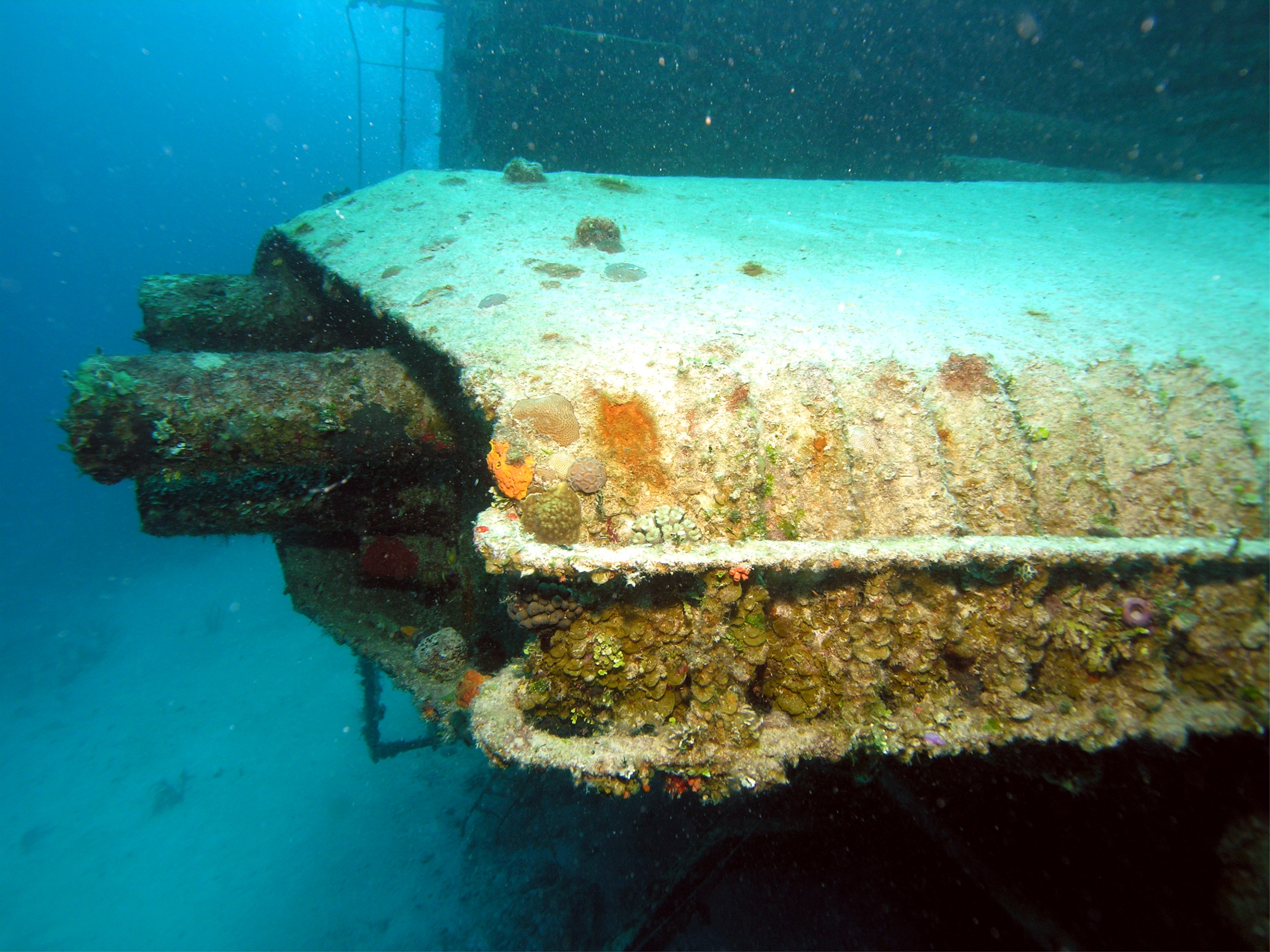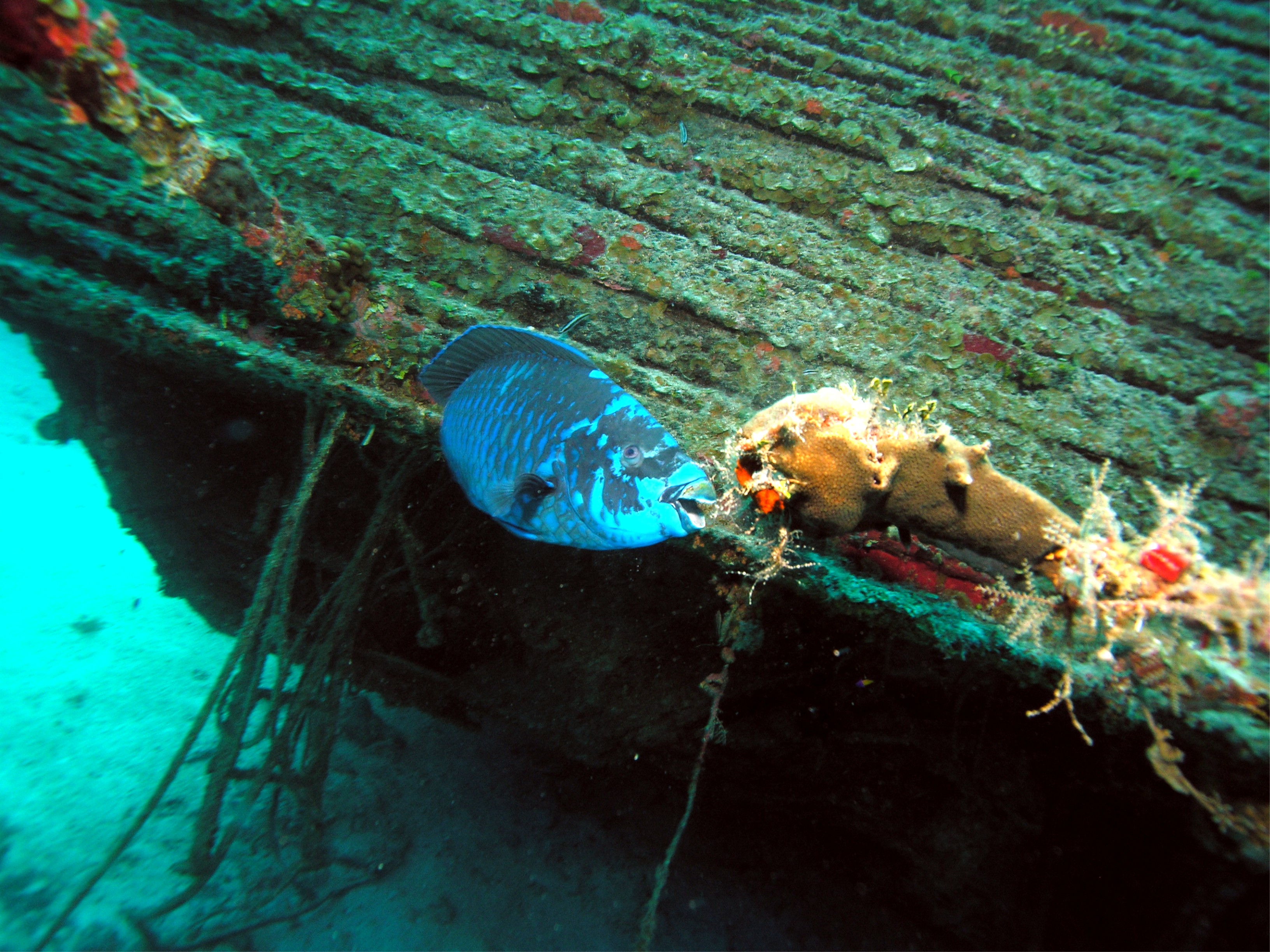This is a guest blog post by Daniel Talbot
The wreck, originally the M/S Logona, was a 228 foot cargo vessel built in 1954 in Norway and was used to move materials between Norway and Spain. The ship was then commandeered by pirates and used for pillaging……..uh, wait…that’s my imagination…The vessel was then commissioned by the Bahama Cement Company in 1969 to move sand from Florida to New Providence and Eleuthera. Money was allocated for restructuring the ship and it was to be registered with Lloyd’s List in 1981. Lloyd’d List is the leading daily newspaper for the maritime industry covering all sectors of the shippingworld including tankers, containers, ports and dry bulk. However the million dollars needed for restructuring the ship could not be obtained and the decision to decommission it was made. The M/S Logona was to be scuttled and sunk in deep international waters.

Enter Thanassis Galanopoulous, engineer and a scuba enthusiast. Mr. Galanopoulous suggested sinking the vessel in shallower waters to create and artificial reef and an attraction for marine life and thus an attraction for divers. In October of 1982 the M/S Logona was towed by UNEXSO to a designated spot off shore and on the edge of the continental shelf, the ballasts were opened and the the vessel sank. It now rests on its port side on a sandy patch at approximately 105 feet with upper sections being at a more modest 60 feet, thus creating a diverse selection of marine life who now call this wreck home. Divers call this site Theo’s Wreck.

I was diving today with Xanadu Undersea Adventures and we were bringing a family from Chicago out to explore the wreck. We approached the site and moored to an existing buoy that was secured to the wreck below. Standing on the bow of the dive boat I could make out the massive shape on the ocean floor. Out ahead of the boat and into deeper waters you could make out the change in the color of the ocean, from turquoise to a dark blue, where the continental shelf drops off and the ocean depth grows to thousands of feet. The proximity of the shelf sometimes brings in pelagic life from the ocean deep. I was pretty excited …maybe we would see some sharks.
We entered the water and started down a cable attached to the buoy and the bow of the ship. The visibility was excellent and the current was minimal. As you descended, the ship appeared to grow and advance and you started making out the life that’s now calls this wreck home. Shoals of jacks are spotted about, a snapper, and bunches of squirrelfish as well. Grunts seem to dominate today as hundreds peek out from small compartments and crevasses on the ship.

I settle near the bow and start slowly making my way towards the back of the ship. The skin of the ship is covered with rich vegetation and plenty of orange sponges. The colors are bright and vibrant. Gorgonians reach out from everywhere. Big sea fans and whips seem to vibrate in the slight current. There are a few cut-aways created for divers who wish to enter. One is on the side of the ship and it brings you into the cargo hold. A 4 foot by 6 foot square entrance has been neatly removed and access to the inside of the ship is easy. As I enter I spy a resident green moray poking it head out from under some encrusted shelving, opening and closing its mouth and looking almost menacing. I know he’s only breathing and observing yet another visitor to his home. A look around and I spy a cat head winch which must have been used in the day the ship was loading materials for transport. It’s never going to be used again. Quite obvious, but it was also beautiful, being adorned with whips and sponges. I continue on and exit the hull by way of yet another cut-away. Outside the wreck I continue my on my trek toward the back of the ship. I’m excited to get to the screws of the ship but don’t want to be done too soon. I check my air and see I’m closing in on a thousand pounds left.

The depth I’m at is definitely helping me consume my air a bit faster than I wanted so I push on. Parrot fish are greeting me now along with a few surgeons and more grunts. The ship sides are once again bursting with color as I slip along.. My eyes are adjusting back to the natural sunlight that does eventually make it to the depths. I stop to observe the corral and fans that are filter feeding the water almost like they are breathing. Finally I get to the end of the ship and spy its massive propellers. One of the monsters half buried in the sand. It is certainly a humbling experience being so close to the large prop. What’s more humbling is when I look out past the wreck into the deep blue and see the water turn darker and darker blue and almost into black as the continental shelf drops off into the distance. I feel like I’m front row of a huge IMAX theater screen watching the life swim around.
Although I wasn’t visited by any big animals of the deep that day I was still in awe. I had a few minutes left before I was to have to start making my ascent and I ducked down to the sandy floor of the ocean to hopefully spy some crabs or lobsters that may be hiding nearby under the structure. I spy a few lobsters who spy me back and shrink further under the ship. I give a wave goodbye to them and head for the cable which would lead me back to the mooring buoy and of course our dive boat. I was a little bit bummed my dive was ending but I still had a smile on my face as I started my accent. It was a slow slip up the cable as other divers were joining in on the return. I didn’t mind though as I could look down and watch the wreck slowly start to shrink again, still beautiful as it started to fade. At the three-minute decompression stop I kept looking around hoping to catch a glimpse of some large ocean fish stopping by to see the wreck as well. Maybe even a dolphin as I have heard they frequent the place. Alas there was nothing but a few divers still. Maybe next time.

